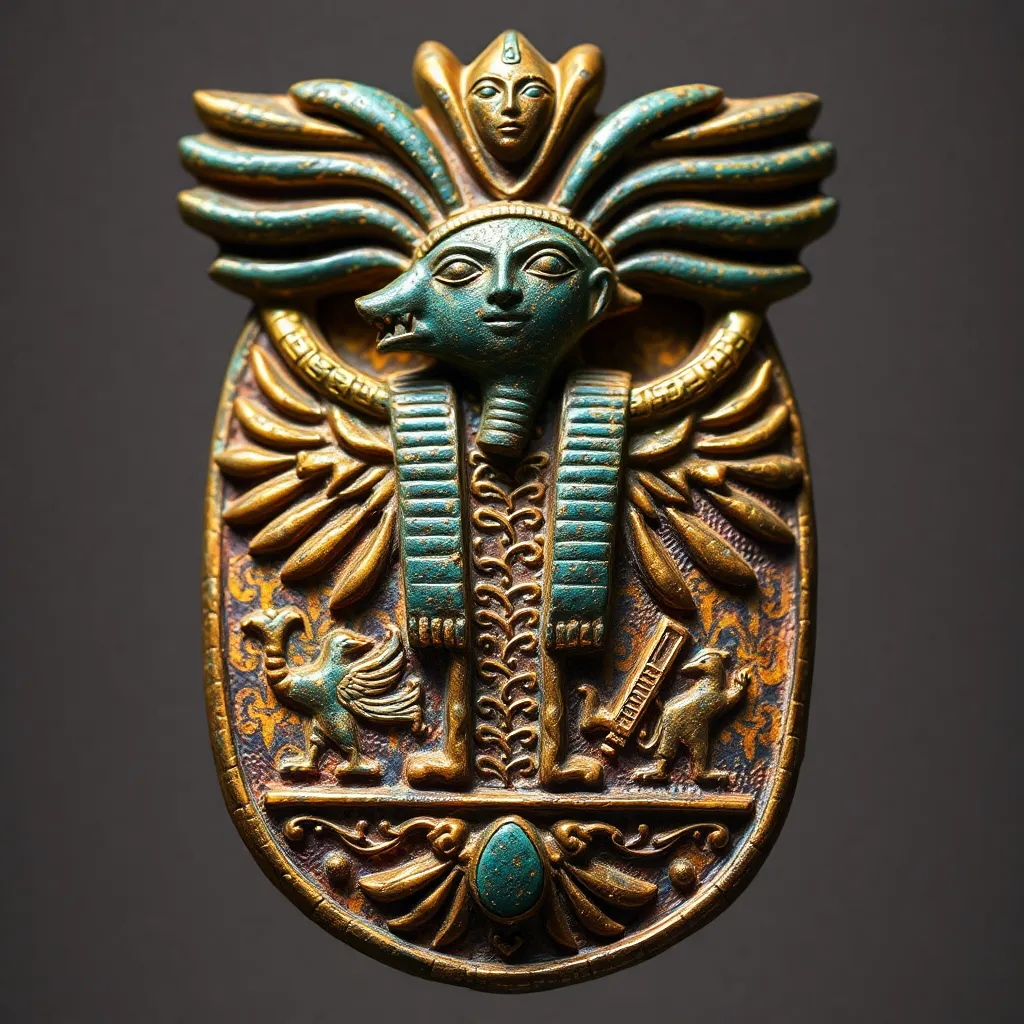The Influence of Amulets on Egyptian Art and Culture
I. Introduction
In ancient Egyptian society, amulets were small objects believed to possess protective qualities and bring good fortune. These artifacts held immense significance not only in daily life but also in the spiritual and cultural practices of the time. Amulets were integral to the beliefs surrounding the afterlife, serving as a bridge between the living and the divine. This article aims to explore the profound influence of amulets on Egyptian art and culture, delving into their historical context, types, artistic representations, funerary roles, and lasting legacy.
II. Historical Context of Amulets in Ancient Egypt
The origins of amulets in ancient Egypt can be traced back to prehistoric times, evolving throughout various dynasties. Initially, simple objects were used, but as the civilization advanced, so did the complexity and artistry of amulets.
- Old Kingdom: The use of amulets became more widespread, with many depicting deities and symbols of protection.
- Middle Kingdom: Amulets were crafted with greater sophistication, often incorporating intricate designs and materials.
- New Kingdom: A peak in amulet production, reflecting the wealth and artistic prowess of the time.
Amulets played a vital role in daily life, offering protection from negative forces and ill fate. They were commonly worn or placed in homes and tombs, reflecting the ancient Egyptians’ deep-seated beliefs in the afterlife, where these objects were thought to accompany the deceased and provide them with safety and guidance.
III. Types of Amulets and Their Symbolism
Amulets were made from various materials, each chosen for its perceived power and significance. Some common materials included:
- Stone: Precious stones like lapis lazuli and turquoise were favored for their beauty and believed magical properties.
- Metal: Gold and silver were often used, symbolizing wealth and divine favor.
- Clay: More accessible materials, frequently molded into various shapes and symbols.
Popular shapes and symbols included:
- Scarabs: Symbolizing rebirth and transformation.
- Ankhs: Representing life and immortality.
- Eye of Horus: Signifying protection, health, and restoration.
Each of these amulets carried specific meanings and was believed to offer unique protective qualities, reflecting the values and beliefs of ancient Egyptian society.
IV. Amulets in Egyptian Art
Amulets were not only practical objects but also served as significant motifs in Egyptian art. Their representations can be found across various artistic forms:
- Sculpture: Amulets were often carved into the surfaces of statues and stelae, symbolizing protection.
- Painting: Wall paintings in tombs frequently depicted scenes of amulets being used to ward off evil.
Jewelry and decorative arts also showcased amulets, with intricate designs that highlighted their significance. Notable artifacts such as the golden funerary mask of Tutankhamun feature amulets integrated into their design, showcasing the importance of these objects in royal burial practices.
V. The Role of Amulets in Funerary Practices
Amulets held a crucial place in ancient Egyptian funerary practices. They were believed to provide protection and guidance to the deceased in the afterlife. Key aspects include:
- Burial Rituals: Amulets were placed on or within the sarcophagus, ensuring safe passage to the next world.
- Mummification: Specific amulets were used to protect vital organs and the body during the mummification process.
- Archaeological Findings: Excavations have revealed numerous amulets in tombs, offering insights into their significance and the beliefs of the ancient Egyptians.
These practices highlight the deep spiritual connection the ancient Egyptians had with amulets, viewing them as essential for a successful transition into the afterlife.
VI. The Cultural Legacy of Amulets Beyond Ancient Egypt
The influence of Egyptian amulet traditions extended beyond its borders, affecting surrounding cultures and later historical periods. For instance:
- Surrounding Cultures: Neighboring civilizations adopted and adapted Egyptian amulet practices, integrating them into their own belief systems.
- Later Historical Periods: The symbolism of amulets persisted through Greco-Roman times, with many Egyptian motifs being incorporated into new artistic expressions.
- Modern Relevance: Today, amulets continue to hold cultural significance in Egypt, with many people wearing them for protection and good fortune.
VII. The Psychological and Social Impact of Amulets
Amulets had a profound psychological and social impact on individuals and communities in ancient Egypt. They fostered a sense of identity, belonging, and security:
- Community Identity: The shared belief in the power of amulets helped forge a cohesive community identity, reinforcing cultural values.
- Psychological Effects: Belief in the protective qualities of amulets provided comfort and reduced anxiety about misfortune and death.
- Anthropological Perspectives: Amulets can be viewed as cultural artifacts that reflect the societal norms, fears, and aspirations of ancient Egyptians.
VIII. Conclusion
In conclusion, amulets played a vital role in ancient Egyptian art and culture, intertwining beliefs, practices, and artistic expression. They served not only as protective symbols but also as representations of the ancient Egyptians’ understanding of life, death, and the afterlife. The enduring significance of amulets in Egyptian culture reflects their deep-rooted belief in the power of these small objects, showcasing a fascinating intersection of art, belief, and protection that has captivated historians and archaeologists alike.




